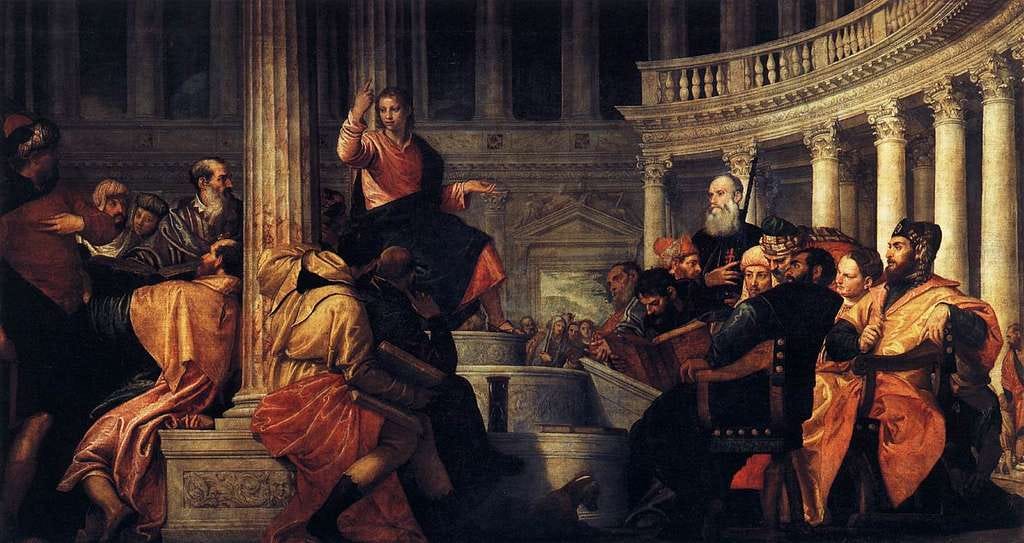Introduction
I have had a long association with the Young Christian Students Movement (YCS) in Australia, but I am still unsure of the place of the Gospel in the life of the YCS.
I think there are two reasons for my uncertainty: first, the students who taught me to Review, used the questions “What does your faith say? What would Jesus do in this situation?” In the Judge section of the Review of Life, however, they did not show much knowledge of the Gospels, or of Church teaching beyond what little they picked up, probably from going to Mass, from sitting in RE classes at school, from their families, and from being in a Review group. I found no evidence of students engaging in theological study.
Second, while I often experienced in Review groups the process of “reflect, act, reflect, act,…” the reflection was often pragmatic, hardly ever theological. The students trusted me to be their “Adult Assistant,” but I often found that any challenges about the Gospel, or to the “truth of faith” were resisted. These were tied to the Church and the Church was not to be trusted with giving direction about how to live one’s life.
And this brings me to the Gospel Enquiry. While it is identified as a tool to be used by Jocist movements, such as the YCW and the YCS, I do wonder if it was ever successful as a tool for transformation. There are references in various sources to leaders doing the Gospel Enquiry before meeting with their groups … and this gives me some hope and a reason for persisting with this action (writing a weekly Gospel Enquiry). I do believe that the Gospel Enquiry has a place in the life of the Church and that we can benefit from “interrogating” the Gospel both individually and collectively.
May this Gospel Enquiry be fruitful for you.
The Gospel
Jesus said to the Jews: ‘I tell you most solemnly, whoever keeps my word will never see death.’
The Jews said, ‘Now we know for certain that you are possessed. Abraham is dead, and the prophets are dead, and yet you say, “Whoever keeps my word will never know the taste of death.” Are you greater than our father Abraham, who is dead? The prophets are dead too. Who are you claiming to be?’ Jesus answered:
‘If I were to seek my own glory that would be no glory at all; my glory is conferred by the Father, by the one of whom you say, “He is our God” although you do not know him. But I know him, and if I were to say: I do not know him, I should be a liar, as you are liars yourselves. But I do know him, and I faithfully keep his word. Your father Abraham rejoiced to think that he would see my Day; he saw it and was glad.’
The Jews then said, ‘You are not fifty yet, and you have seen Abraham!’
Jesus replied: ‘I tell you most solemnly, before Abraham ever was, I Am.’
At this they picked up stones to throw at him; but Jesus hid himself and left the Temple. (John 8:51-59)
The Enquiry
See
What does Jesus claim about himself in his interaction with “the Jews”? Compare what he says about himself with the prologue to John’s Gospel (1:1-18).
Consider the responses of “the Jews” to what Jesus says about himself. How would you describe their theology? How does it differ from Jesus’ theology? Do these differences exist today in Jesus’ Church? in the world?
Why did “the Jews” decide to stone Jesus? What threat did Jesus pose? Does that threat exist today in the Church? in the world? And how is that threat dealt with in the Church? in the world?
Judge
What is your reaction to this event in Jesus’ life? Does it have any relevance for you, for the Church, for the world?
Ideally, how should people deal with differences in beliefs and values?
In what areas of your life are you challenged to change by what Jesus says in this Gospel story? How will such changes impact your relationships inside and outside the Church?
Act
Make a decision about what has to change in yourself and in the world. Think of this as a double transformation: in working to transform the world, you are transformed.
What small action can you commit to carrying out that will lead to this transformation?
Who can you involve in your action, when, where and how often?
Image Source: Pieter Aertsen (Creator), Sixteenth century painting: Christ and the Woman taken in Adultery, National Museum, Stockholm, Picryl, public domain photograph.


